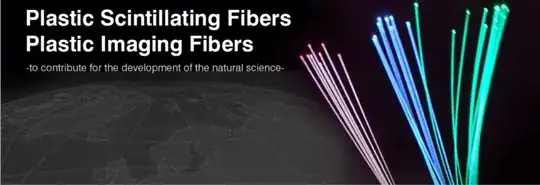For fluorescence to occur, you need to excite at an energy higher than the emission. According to the spec sheet this plastic scintillator emits at a peak of 420 nm - it may be that 400 nm is just not a high enough energy to excite it.
I am used to thinking of scintillators as being used with radiation sources - xray, gamma sources. You need a pretty "hot" source to see scintillation with your bare eyes - many years ago I did the experiment in a dark room illuminating a 3" NaI scintillator with 2 mCi of Ba-133. After my eyes accommodated I could see a very faint glow...
You will have much, much better luck using a dedicated photo sensor (photomultiplier, or these day use a SiPM - solid state photomultiplier). SiPM in particular has a gain of around 10^6 for a relatively low bias voltage (30 V for some devices) and will give you electrical signals in proportion to the incident light. This will show you that your scintillator is working - when you illuminate it with a weak radiation source (an old watch with radium hands would be very effective). See for example http://sensl.com/
I am familiar with plastic fiber scintillators that give off brightly colored light when excited by UV - or even daylight. And that might be the thing to try in your case - illuminate the scintillator with daylight and observe from the side. If you see a blue-ish hue you know you are looking at scintillation - especially if the hue goes away when you go indoors.
Many fluorescent tubes also emit significant UV - this is why some photos will "bleach" indoors when placed near such lamps. You may be able to see your scintillator glow blue in the vicinity of such tube.
And if you only see the glow at "scratches" on the surface it may just be that most of the light bounces around inside (total internal reflection). This is why scintillator surfaces are often roughened - the uneven surface increases the probability that photons can cross the interface where there is a refractive index mismatch. You see this with scintillating fibers that seem to "emit" light only from their ends...
See for example this picture (from http://kuraraypsf.jp/images/index_ph01.jpg)

You can see the "brightness" at the end of the fiber - the construction (with graded index along the sides) drives all the light to this one interface where the light can escape.
